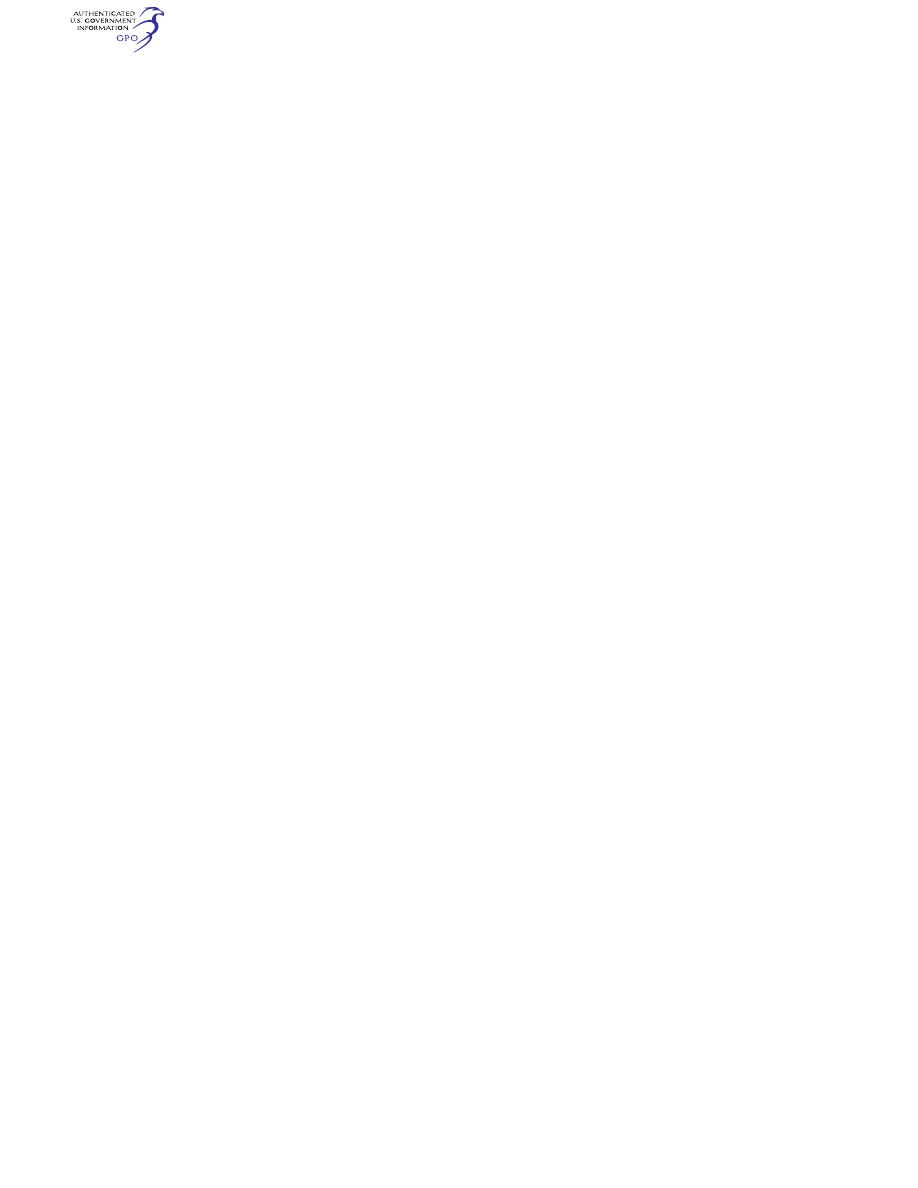
533
Federal Aviation Administration, DOT
§ 27.953
incorporate the following design fea-
tures:
(i) The load necessary to separate a
breakaway coupling must be between
25 to 50 percent of the minimum ulti-
mate failure load (ultimate strength)
of the weakest component in the fluid-
carrying line. The separation load
must in no case be less than 300 pounds,
regardless of the size of the fluid line.
(ii) A breakaway coupling must sepa-
rate whenever its ultimate load (as de-
fined in paragraph (c)(1)(i) of this sec-
tion) is applied in the failure modes
most likely to occur.
(iii) All breakaway couplings must
incorporate design provisions to vis-
ually ascertain that the coupling is
locked together (leak-free) and is open
during normal installation and service.
(iv) All breakaway couplings must in-
corporate design provisions to prevent
uncoupling or unintended closing due
to operational shocks, vibrations, or
accelerations.
(v) No breakaway coupling design
may allow the release of fuel once the
coupling has performed its intended
function.
(2) All individual breakaway cou-
plings, coupling fuel feed systems, or
equivalent means must be designed,
tested, installed, and maintained so
that inadvertent fuel shutoff in flight
is improbable in accordance with
§ 27.955(a) and must comply with the fa-
tigue evaluation requirements of
§ 27.571 without leaking.
(3) Alternate, equivalent means to
the use of breakaway couplings must
not create a survivable impact-induced
load on the fuel line to which it is in-
stalled greater than 25 to 50 percent of
the ultimate load (strength) of the
weakest component in the line and
must comply with the fatigue require-
ments of § 27.571 without leaking.
(d)
Frangible or deformable structural
attachments. Unless hazardous relative
motion of fuel tanks and fuel system
components to local rotorcraft struc-
ture is demonstrated to be extremely
improbable in an otherwise survivable
impact, frangible or locally deformable
attachments of fuel tanks and fuel sys-
tem components to local rotorcraft
structure must be used. The attach-
ment of fuel tanks and fuel system
components to local rotorcraft struc-
ture, whether frangible or locally de-
formable, must be designed such that
its separation or relative local defor-
mation will occur without rupture or
local tear-out of the fuel tank or fuel
system components that will cause fuel
leakage. The ultimate strength of fran-
gible or deformable attachments must
be as follows:
(1) The load required to separate a
frangible attachment from its support
structure, or deform a locally deform-
able attachment relative to its support
structure, must be between 25 and 50
percent of the minimum ultimate load
(ultimate strength) of the weakest
component in the attached system. In
no case may the load be less than 300
pounds.
(2) A frangible or locally deformable
attachment must separate or locally
deform as intended whenever its ulti-
mate load (as defined in paragraph
(d)(1) of this section) is applied in the
modes most likely to occur.
(3) All frangible or locally deformable
attachments must comply with the fa-
tigue requirements of § 27.571.
(e)
Separation of fuel and ignition
sources. To provide maximum crash re-
sistance, fuel must be located as far as
practicable from all occupiable areas
and from all potential ignition sources.
(f)
Other basic mechanical design cri-
teria. Fuel tanks, fuel lines, electrical
wires, and electrical devices must be
designed, constructed, and installed, as
far as practicable, to be crash resist-
ant.
(g)
Rigid or semirigid fuel tanks. Rigid
or semirigid fuel tank or bladder walls
must be impact and tear resistant.
[Doc. No. 26352, 59 FR 50386, Oct. 3, 1994]
§ 27.953
Fuel system independence.
(a) Each fuel system for multiengine
rotorcraft must allow fuel to be sup-
plied to each engine through a system
independent of those parts of each sys-
tem supplying fuel to other engines.
However, separate fuel tanks need not
be provided for each engine.
(b) If a single fuel tank is used on a
multiengine rotorcraft, the following
must be provided:
(1) Independent tank outlets for each
engine, each incorporating a shutoff
valve at the tank. This shutoff valve
may also serve as the firewall shutoff
VerDate Sep<11>2014
09:06 Jun 28, 2024
Jkt 262046
PO 00000
Frm 00543
Fmt 8010
Sfmt 8010
Y:\SGML\262046.XXX
262046
jspears on DSK121TN23PROD with CFR
